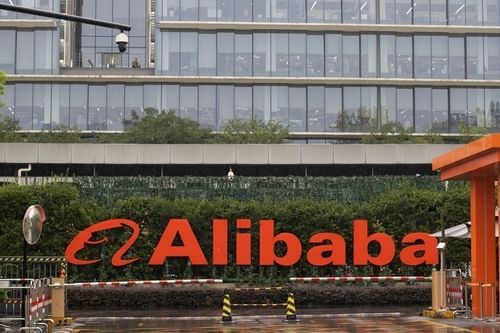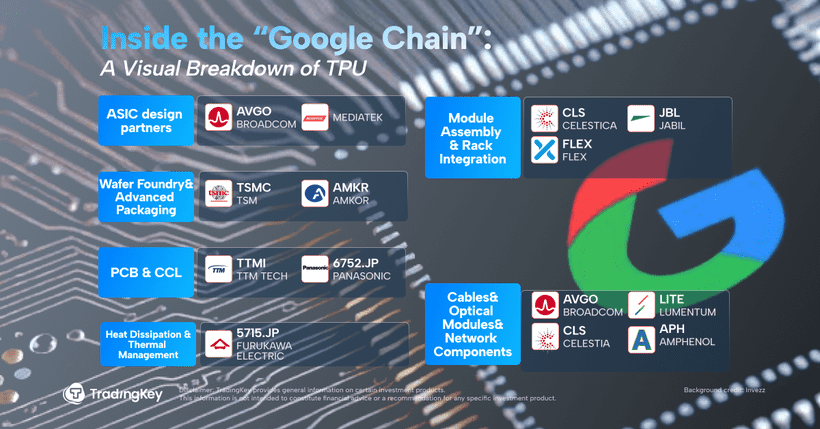Renaissance Technologies: Inside the Machine of Quantitative Mastery


When Jim Simons launched Renaissance Technologies in 1978, he probably recognized it wouldn’t be like any traditional Wall Street firm. A brilliant mathematician who used to break codes, Simons helmed a radically different kind of quantitative investment. Decades later, although Simons stepped down as CEO in 2010 and retired in 2021, unfortunately passing away at 86 in 2024, his hedge fund continues to use one of the most secretive and successful methods out there.
Today, Renaissance Technologies LLC, or simply “RenTec” to many, is still an institutional titan that operates a $66-billion equity book in a staggering 3,400+ holdings. This breadth is not a coincidence, it is a consequence of an ultra-high-frequency trading model that mercilessly taps world market inefficiencies minute by minute. With turnover averaging 22% during last quarter, the firm’s data-based robot is forever adjusting positions, never quite sitting still too long.
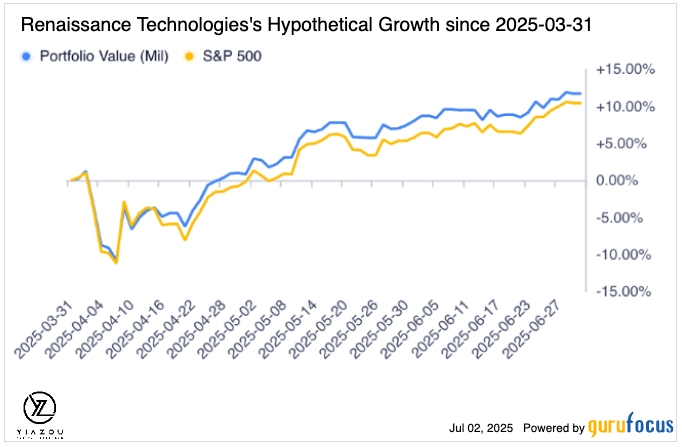
Sector Allocation: Tech is Still Number One
The latest sector allocation of the fund (March 31, 2025) again confirms its unwavering tilt towards tech, a cornerstone of its edge. As we saw in the vibrant donut chart you presented, Technology leads at 17.72% of overall equity exposure, which only further buttresses that Simons’ quant kingdom has not deviated from sectors with abundant liquidity and data.
Healthcare is a close second at 14.67%, and Consumer Cyclical and Financial Services represent 11.18% and 10.79% respectively. Industrials, Communication Services, and Consumer Defensive round out the midweights, each representing large slices. Meanwhile, so-called “old economy” industries such as Basic Materials (4.86%), Energy (4.55%), Utilities (2.07%), and Real Estate (3.05%) as a whole fall under stricter controls, a not-surprising skewing in a company that boasts deriving earnings out of today’s fast-paced tech and biotech world.
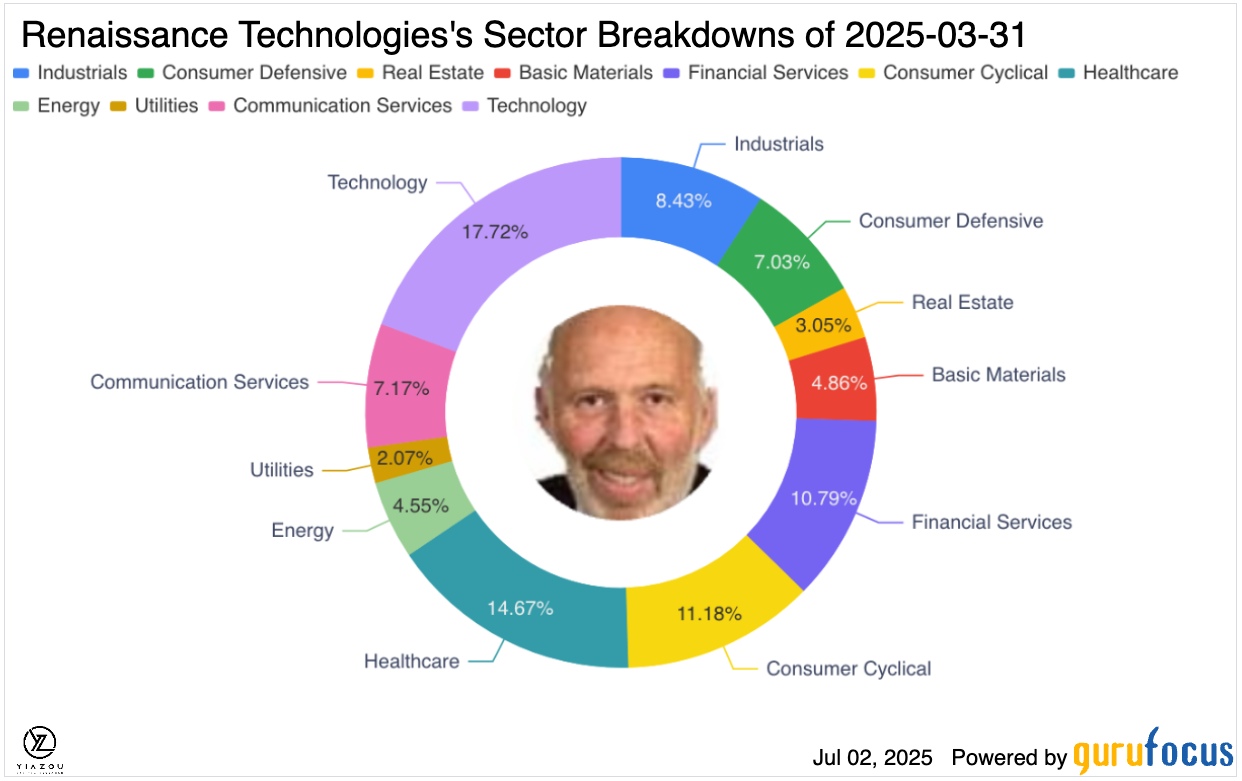
Digging Into Tech: Software Rules the Stack
RenTec’s breakdown of sectors in Technology is similarly insightful. Of its tech allocation, Software claims a massive 13%, by far its leading slice. Hardware and Semiconductors are minute at around 2.3% and 2.4% respectively. For such an algo-based strategy, such a tilt is reasonable. Software companies have typical predictable revenue streams and market depth that are preferable ingredients of short-run prediction models.
If you look at its accompanying heat map, it’s clear where its leaning is: Palantir Technologies (PLTR) alone accounts for nearly 49% of the Software sub-sector, followed by a massive holding in VeriSign (VRSN) at 27.2%. This type of concentration, even in thousands of names, is signaling that these models are recognizing repeated signals that they think happen in these names specifically.
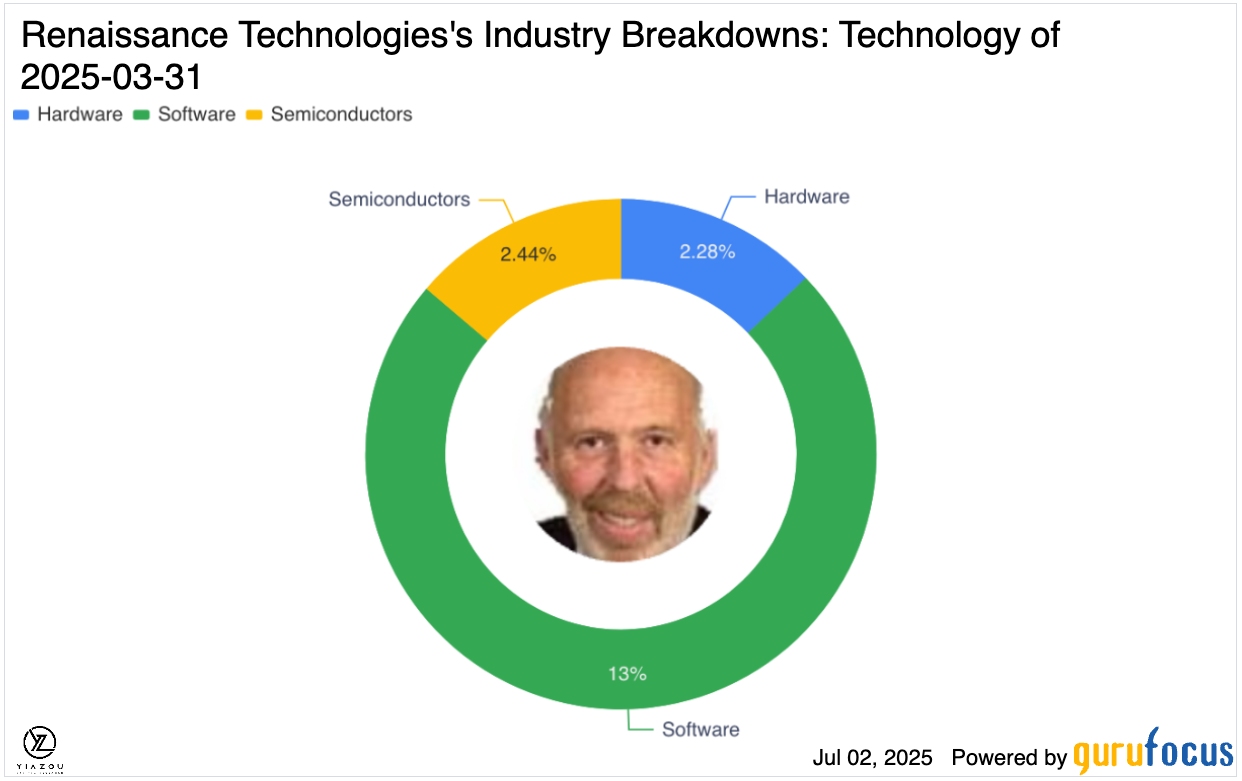
Top Holdings: Who's Who of Strategic Bets
While it possesses thousands of shares, RenTec's top holdings are striking not only due to their size but also due to diversity. According to the recent GuruFolio snapshot, Palantir is top with a holding that is worth over $1.37 billion, equivalent to somewhere in the neighborhood of 2% of the entire portfolio, followed by VeriSign, Corcept Therapeutics, Robinhood, and Sprouts Farmers Market.
Notice that these holdings encompass tech, biotech, and niche consumer names, more confirmation that Renaissance models scan gigantic sets of signals that are industry-agnostic. The grand surprise is that they have a whopping stake in Robinhood Markets (HOOD), rising a staggering 38% or so over past intervals, a sign of a nimble psyche towards newer more erratic names.
Trading Activity: The Never-Ending Shuffle
If Renaissance has a constant, it’s motion. Their Q1 2025 numbers are telling: 460 new purchases in the quarter alone, that’s about 13% of the overall portfolio. Their highest-profile flagship, The Medallion Fund, is so secretive and so reliable that outsiders never get a glimpse, but public equity holdings give a glimpse of the churning machine underneath.
Their top trades are a mix of sales and new purchases. As a few examples, they reduced their ownership in Palantir by nearly 29% but still hold over 16 million shares. They bought new shares in Broadcom, Alphabet, Meta, and AMD, all core infrastructure or AI plays that are a good match with their data-intensive style.
The Heat Map: The Colorful Window Into Sentiment
One quick glance at the holdings heat map shows where the models are bullishly or bearishly biased. Palantir's slice is illuminated green at a massive 49%, showing a huge overweight. Some of the other vibrant greens are Robinhood, 94% leaned, and SPOT, weighted at nearly 30%. Some biotechs like Vertex Pharmaceuticals (VRTX) and United Therapeutics (UTHR) are red, showing recent trimming or underperformance.
This is a real-time map of locations where algorithms employed by the company spot mistakes in pricing or mean reversion trades, and that map could change dramatically next quarter. A Legacy That Never Stops Computing What is unique about Renaissance is that it no longer bets on grand economics tales or A-list stardom managers anymore. What it is instead is a massive vehicle of mathematicians, theoretical physicists, and data scientists who let data call the shots. Unmoored from Jim Simons as its CEO, it is still the same philosophy: go find signals hidden in noise, extract them methodically, and improve continuously.
This disciplined reliance on quant models has enabled RenTec to weather a myriad of competitors, scandals, and regimes in markets. Though newer quants and AI funds chip around corners, Renaissance's early start with data, infrastructure, and intellectual talent keeps it several leagues ahead. For outsiders peering behind the veil, these quarterly reports are our only breadcrumbs. They remind us that sometimes it's the silent hum of great algorithms more so than human intuition that continues to bring in the cash, one trade, one minute inefficiency, one data point at a time.
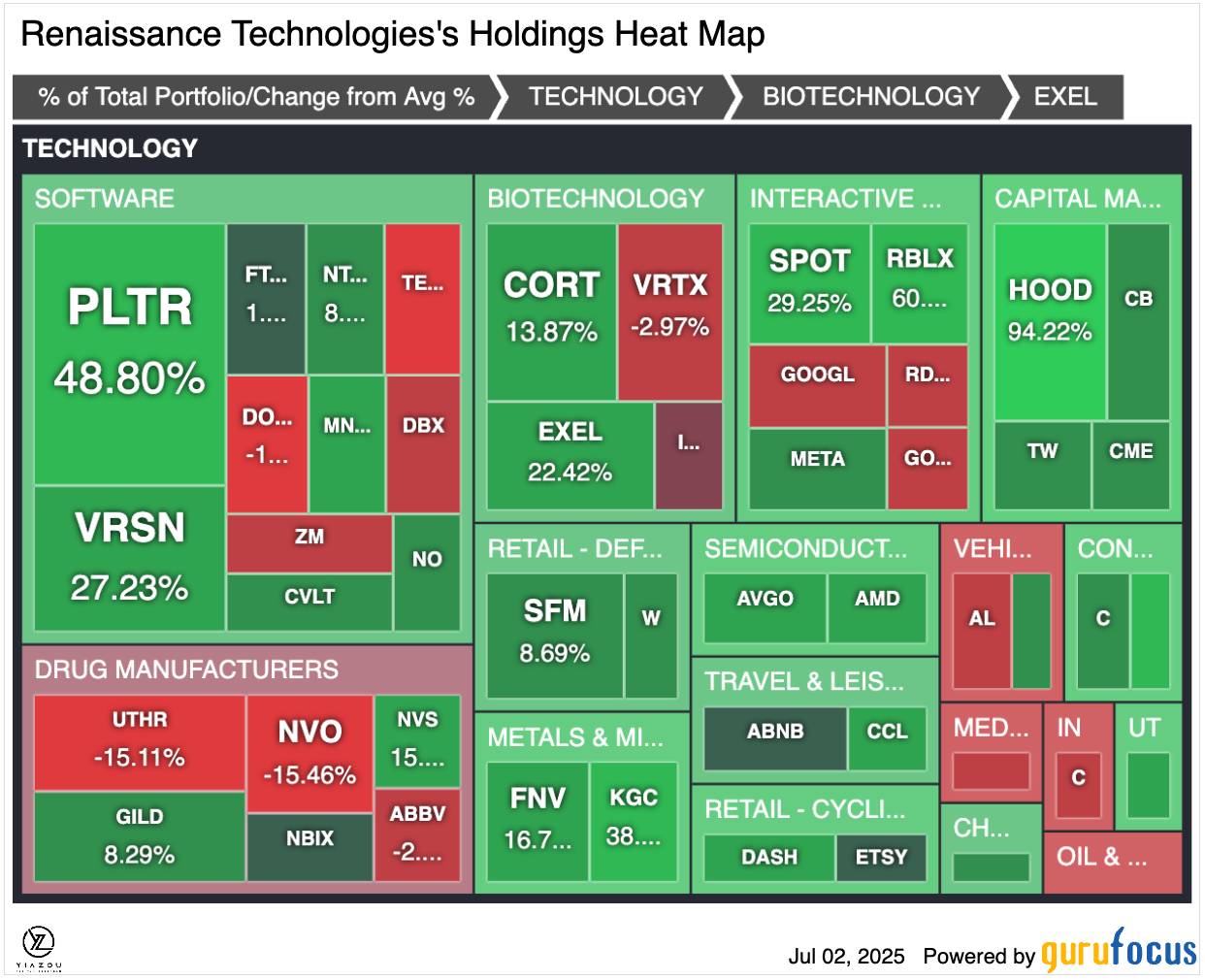
Bottom Line
Renaissance Technologies remains a lasting testament to math's power, machine learning's strength, and methodical discipline's potency. Whether you’re in awe of its black boxes or green with envy over its consistent outperformance, rest assured, Jim Simons's legend continues to calculate, long after his last equation.
.png)




